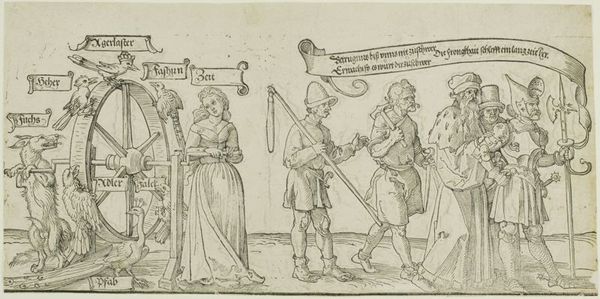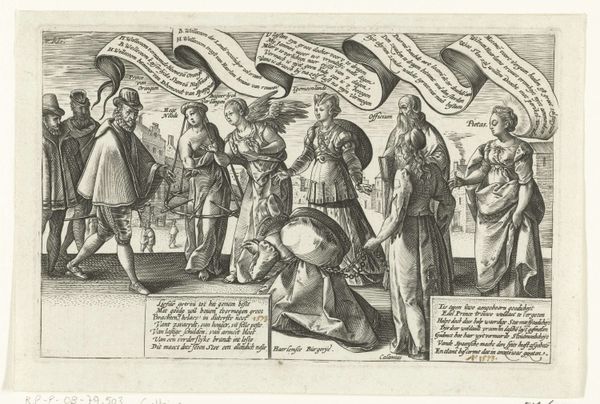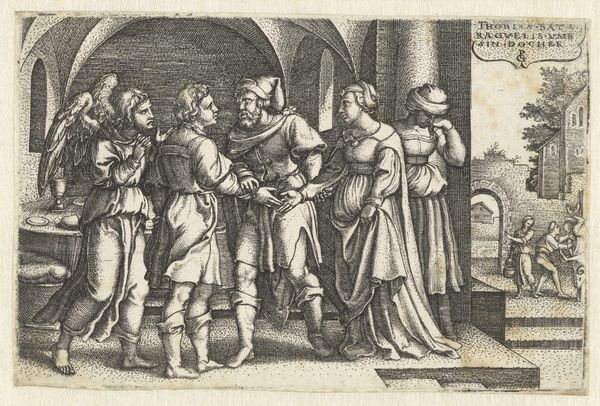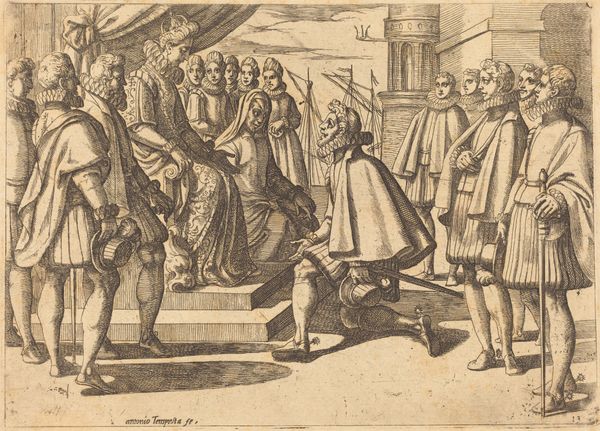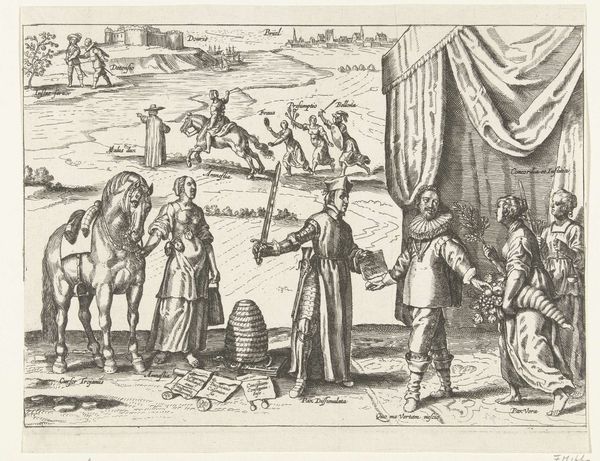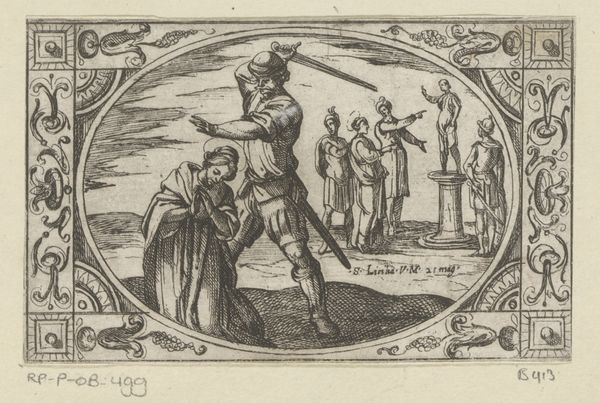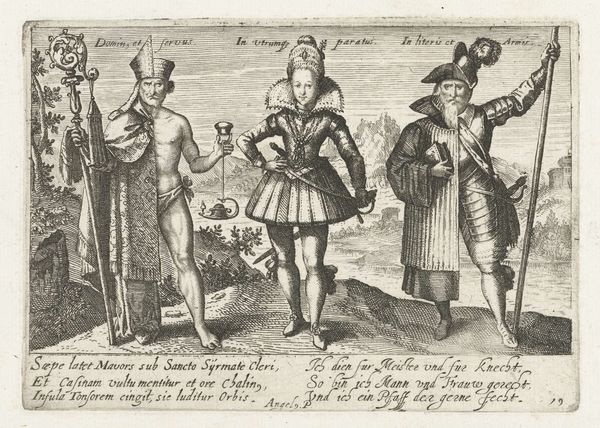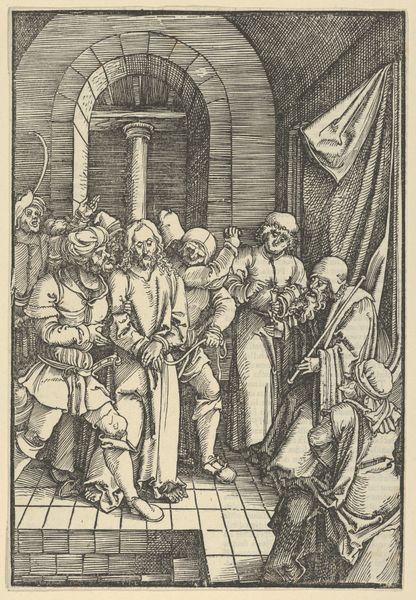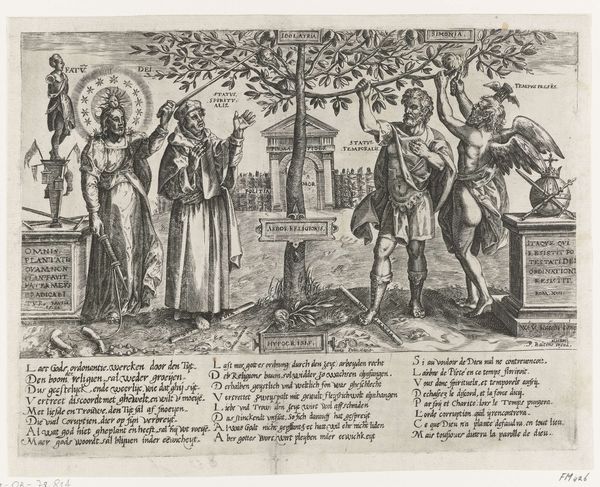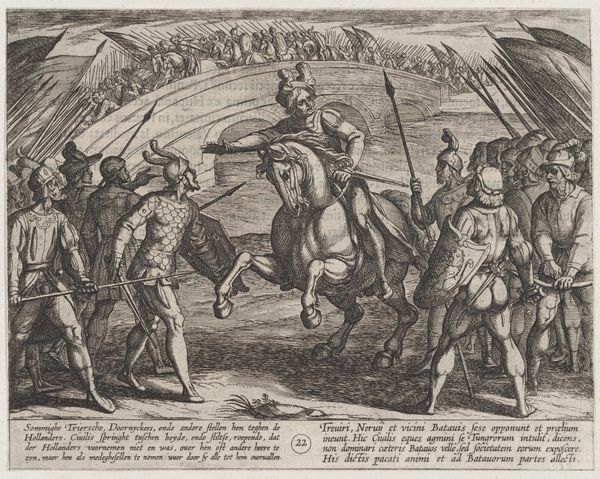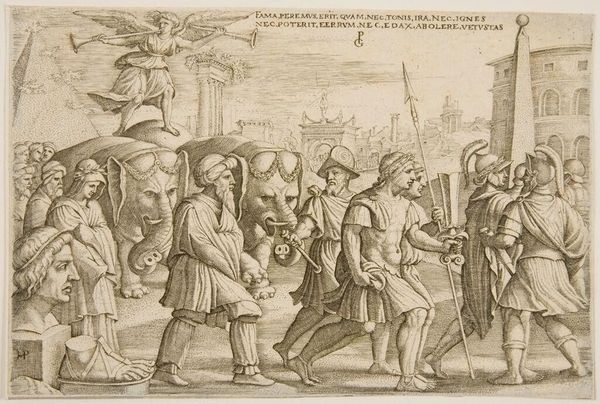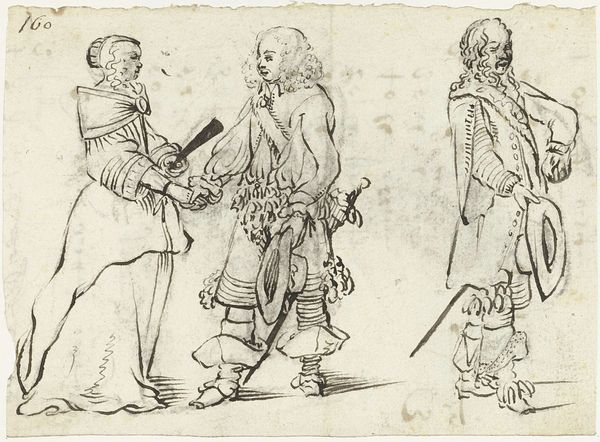
Dimensions: height 152 mm, width 314 mm
Copyright: Rijks Museum: Open Domain
Curator: Here we have a work attributed to Albrecht Dürer titled "The Wheel of Fortune; the Five Ranks", dating from the 1520s. It’s a complex print with fine lines, various figures, and curious details. Editor: The density of this engraving definitely creates a feeling of… anxiety? I see the wheel, and the procession of figures. There's a sort of looming quality to the whole thing. Curator: Right. It's powerful how he uses a woodcut to depict the concept of fate. Looking at the materials, a print like this would be reproduced multiple times and disseminated, spreading the allegorical message to a broader audience beyond just the elite. It underscores the democratic potential of printmaking during the Renaissance. Editor: And those figures processing seem to be of varying social status; is it a commentary on how fortune touches every echelon of society? The image of a woman operating a textile loom speaks directly to labor roles for both women and perhaps a larger system of textile exchange, which itself had implications in expanding markets and class structures across Europe. Curator: Exactly. Dürer masterfully intertwines technical skill with thematic complexity, and to me, the level of precision given the labor behind woodcutting, reminds us how prints acted like a vehicle of democratization of art. The meticulous carving process involved craftspeople, and a network of workshops – something often lost in focusing on just the artist. Editor: Agreed. What's interesting is how a work of art engages social commentary, specifically on how wealth or status does not necessarily determine a person's fate and position in society, a narrative still strikingly relevant today. Durer situates those elements right alongside symbols like the Wheel, but doesn't offer resolution or didactic guidance. Curator: A nuanced dance between materiality, process and production. How the print as object affected people. And your lens reveals its lasting power in critiquing contemporary conditions of inequity, as if we are trapped in a similarly inescapable social wheel. Editor: I think it is fascinating how artworks become vessels where materials not only facilitate images but hold memories from their time while revealing some larger picture regarding justice, wealth, and equity throughout our shared global timeline. It becomes an enduring call-and-response across centuries, thanks to pieces like this one.
Comments
No comments
Be the first to comment and join the conversation on the ultimate creative platform.
